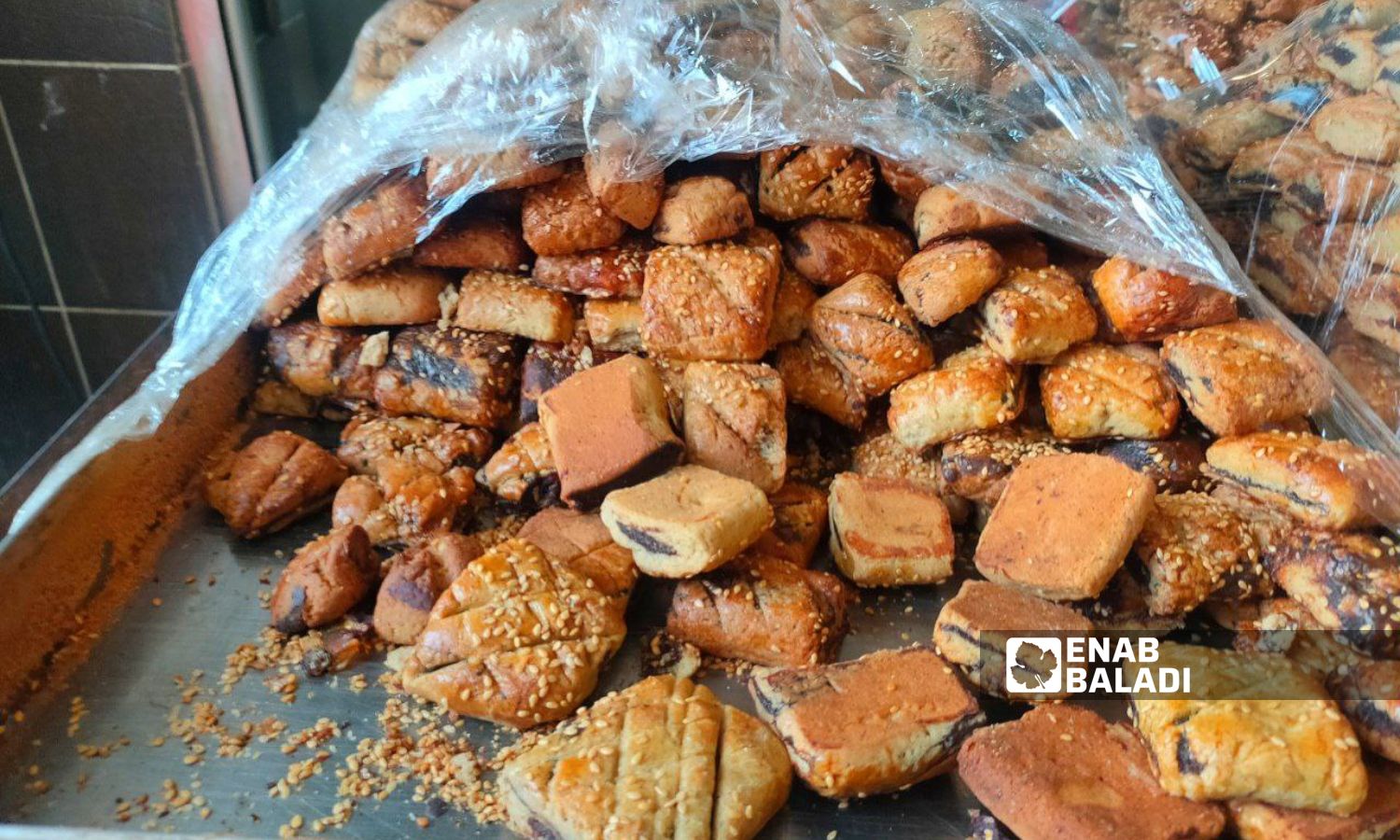



Al-Hasakah – Majd al-Salem
As you walk in the evening through the streets of Qamishli and al-Hasakah, your nose will surely distinguish the scent of kleija that begins to waft from the windows of most homes, announcing the nearness of Eid al-Fitr.
Kleija is considered one of the most famous pastries that the residents of al-Hasakah and northeastern Syria insist on making for the holidays, and during family gatherings and exchanged visits among relatives and friends.
Amal Mohammed (48 years old), a woman from Qamishli, considers the making of kleija as one of the most prominent traditional rituals that characterize the Eid celebrations in the city, and it is a heritage that extends for generations.
She said that she feels happy while preparing kleija, considering it part of the joy of Eid, as women from family and relatives gather to prepare and bake it.
Amal told Enab Baladi that kleija holds special symbolism for children, as they eagerly await Eid to be able to taste it and enjoy its flavor.
“Making kleija is not just about preparing sweets, it is a family tradition that unites us and adds a special atmosphere to the Eid celebrations. The stories of kleija are passed down from generation to generation, carrying with them warm and beautiful memories,” the lady said.
Amal believes that the atmosphere of Eid is incomplete without the preparation of kleija, so no matter how the Eid preparations are, not kneading and baking kleija and letting its aroma fill the place gives a sense that “something is missing in the Eid rituals.”
She explained that the women of the family gather, each with her own skill and experience, around a large tray of flour, the dough begins to take shape under their hands, and they exchange conversations, laughter, and singing, pointing out that each family has its own special atmosphere in preparing this sweet.
Faisal Ali (47 years old), a resident of Qamishli, makes sure to ask his wife to prepare kleija before every Eid and considers them essential sweets that cannot be dispensed with. He points out that his ability to buy pastries and luxury sweets does not replace having kleija, which he prefers to eat with tea or Arabic coffee.
Regarding the cost of making kleija, Khadija Saleh (40 years old) from Qamishli’s residents, said that the costs of making them are considered “reasonable” despite the price increases witnessed in the region.
The lady told Enab Baladi that she prepared dough enough to produce four kilograms of kleija, and bought all of its basic ingredients such as instant yeast, vanilla, baking powder, spices, eggs, butter, ghee, sesame, and sugar for about 120,000 Syrian pounds (the cost per kilo is approximately 30,000 pounds).
She added that she prefers to bake kleija in the home oven, but the problem of the power outage from the main network and the home oven’s need for sufficient amperes (private power subscription) to work prevents “many” families from baking it at home, so they resort to the stone ovens found in the market or in the neighborhoods of the city.
Enab Baladi monitored the prices of ready-made kleija in the market, and the price per kilogram ranged between 25,000 and 35,000 pounds, depending on the type of filling, whether it was dates, walnuts, or plain without filling.
In the countryside, according to Enab Baladi, residents find it difficult to prepare kleija due to the scarcity of electricity and the lack of nearby ovens, while a few households still prepare kleija in the tandoor oven, so rural residents resort to buying them ready-made from the city.
With the beginning of the month of Ramadan this year, on March 11, the prices of most goods in northeastern Syria have risen, amidst a deteriorating economic and living reality. Daily wages of workers in the region are about 40,000 Syrian pounds, while the minimum wage of employees at the Autonomous Administration institutions is 1,040,000 Syrian pounds (the dollar equals 14,450 pounds).
if you think the article contain wrong information or you have additional details Send Correction